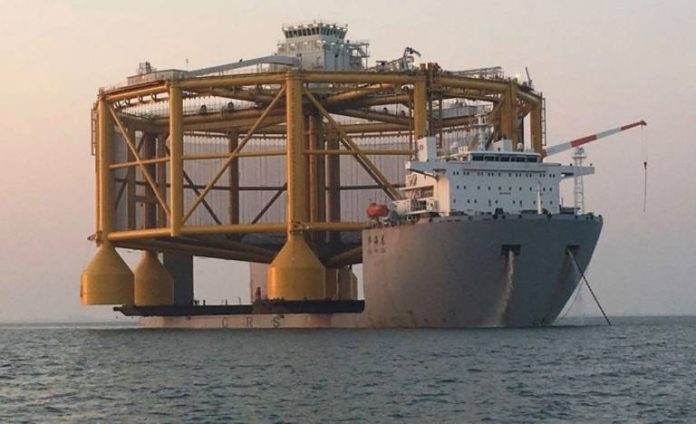Anyone aiming to nab the highest possible prices for salmon ought to look far beyond Europe’s borders.
We need to talk a little about offshore salmon farming. Land-based farming has long been the topic of discussion, along with the threats and potential that exist there, while offshore has to some extent slipped under the radar just lately.
This hasn’t happened intentionally. What with offshore having been granted no less than 38 Norwegian development licenses; no other branch of technology has harvested a richer haul from the ongoing innovation project of Prime Minister Solberg’s government.
Only one operative
So far only one installation is operative, SalMars “Ocean Farm 1”. The experience so far, and, not least the name, indicates that we could see more of this type of construction. SalMar has also bought into a new and larger rig, via the Stavanger company Mariculture.
Nordlaks is the other major player here. The first 385-metre long “Havfarmen” is currently under construction, and salmon eggs earmarked for the installation are already in the process of maturation. At the forefront of development will be Inge Berg & Co., having snapped up a whopping 21 development licenses.

Scale is the focal point for both SalMar and Nordlaks; not forgetting Norway Royal Salmon. They are building giant steel installations. It’s costly to build for an ocean location, the structures must be dimensioned for extreme wind and wave conditions.
«Ocean Farm 1» is not on the ocean, so to speak. The rig is not located in open sea, but close to the skerries of Frohavet at the mouth of Trondheimsfjord. Nordlaks is planning to anchor its first sea farm close to shore – not in open sea.
In open sea
Possibilities first emerge once one ventures out to open sea. In the same way, as for land-based complexes – when flagging out.
If you are able to choose, and that option is available here, it is more rational to produce fish close to the markets that pay the best prices. Markets that must include air freight costs in their pricing calculations. North America, South Africa or East Asia come to mind immediately.
They are all markets with suitably temperate sea temperatures and limited competition from regional fish farming operations – and not least important – they are not encumbered with license price tags in the region of EUR 20 million per piece.
Offshore fish farming is already underway several places in the world, but not to any great extent for salmon. Take for example Hawaii and Japan, where there are production sites containing tropical fish. There they are also focused on dealing with weather conditions that make North sea autumn storms sound like a mild summer breeze. Cyclones are probably the biggest risk for offshore farming in Asia. But anyone who knows the market for oil rigs, knows these can also be supplied for the category “Harsh weather conditions”.
Flagging out
One company that has been promised development licenses, Atlantis Subsea Farming, is literally going underneath the bad weather problem – by enabling the submersion of the installation when storms approach. Where there’s a will, there’s a way. Problems are there to be solved.
I’m taking for granted that the boards of directors for SalMar and Nordlaks, as with any others who are studying how to approach this problem, have not discussed exclusively the potential for semi-exposed offshore farming in the skerries at Frøya or Hadseløya. I’m certain they visualise farming taking place in open seas, and thus, also on other continents than Europe.
Flagging out and development of new production regions is something that will be difficult to impose limits on. Advances in salmon farming won’t come to a halt, even if some of the production nations may choose to no longer join in on the growth carousel.
Flagging out is naturally not in Norway’s, nor Chile’s (for that matter), national interests. But this is no prestigious international championship. Capital goes where it gets its best returns. It sees only a limitless horizon.

